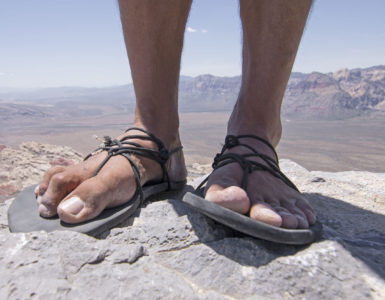 Bone spurs are the result of extra bone growth, typically in the area where two bones meet. It’s the result of too much bone regeneration as the body tries to create new bone cells, and it can result in the formation of a prominence known as a bone spur. Sometimes these growths go unnoticed, while other times they cause a lot of pain. Below, we take a closer look at the symptoms and treatment options for bone spurs that develop on the top of your foot.
Bone spurs are the result of extra bone growth, typically in the area where two bones meet. It’s the result of too much bone regeneration as the body tries to create new bone cells, and it can result in the formation of a prominence known as a bone spur. Sometimes these growths go unnoticed, while other times they cause a lot of pain. Below, we take a closer look at the symptoms and treatment options for bone spurs that develop on the top of your foot.
Causes and Symptoms of Bone Spurs
We talked a little about the mechanics of bone spur development above, but this excess bone growth can be brought on by a number of different health issues, including osteoarthritis. During this form of arthritis, the cartilage between bones deteriorates, and to compensate for this loss, the body ends up producing more bone in this area, which can develop into bone spurs. Other factors that can contribute to bone spur development include loss of cartilage due to the natural aging process, injury to the foot, degeneration due to being overweight or from wearing constrictive shoes.
Symptoms of a bone spur on the top of your foot include:
- Redness
- Swelling
- Limited Foot joint mobility
- Difficulty standing or walking
- Discomfort while wearing shoes
Diagnosis and Treatment
Bone spurs that develop in the metatarsophalangeal (MTP) joint are pretty easy to diagnose with the naked eye because there is not a lot of fat on the top of a person’s foot. However, your doctor may still conduct some mobility tests and request imaging exams to get a better idea of the joint damage and how to best treat the growth.
For mild cases or for bone spurs that are not causing symptoms, treatment is pretty basic. Your doctor will recommend treatments like over-the-counter pain relievers, shoes with extra room for the top of your foot, eating a healthy diet to help reduce inflammation, weight loss and regular monitoring. As long as symptoms are not getting worse, there’s not much you need to do for the spur.
However, if pain is severe, it’s causing problems within the foot joint or it’s inhibiting your normal gait, more hands-on treatment may be called for. Aside from the aforementioned techniques, your doctor may also recommend ice and heat therapy to reduce inflammation, cortisone injections, and if all else fails, surgery. Surgery involves making a small incision over the spur and removing the excess bone and freeing any compressed areas. Most patients experience great results with bone spur surgery, but many of them can manage their condition with conservative care.
So if you’ve noticed the formation of a bony bump on the top of your foot, reach out to Dr. Silverman’s office today for more information on how to best treat the bone spur.